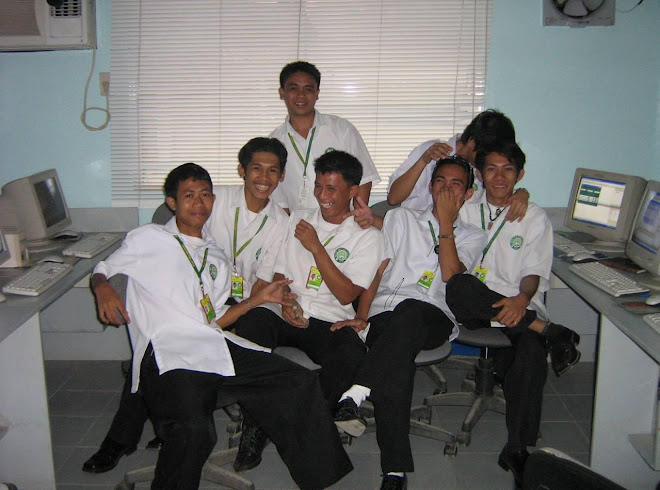Dried Fish is unsalted fish, especially cod, dried by sun and wind on wooden racks on the foreshore called flakes, or in special drying houses. The drying of food is the world's oldest known preservation method, and dried fish has a storage life of several years. The method is cheap and effective in suitable climates, the work can be done by the fisherman and family, and the resulting product is easily transported to market. Cod is the most common fish used in stockfish production, while other whitefish, such as pollock,haddock, lingling and tusk, are used to a lesser degree. Over the centuries, several variants of stockfish have evolved, notably salt cod (q.v.). Salting was not economically feasible before the 17th century, when cheap salt from southern Europe became available to the maritime nations of northern Europe.
The original objective for traipsing to the Tagbilaran Public Market last Saturday was to stock u

p on “buwad or bulad” (for Visayans) or “daing” (for Luzonians) or dried fish (or other denizens of the sea like squid) for our household back in Manila. I figured if I bought enough I could stick it in a box, check it into the hold of the PAL jet that would whisk me back to Manila the next day. I was in Cebu for several days before Bohol and I was extremely busy otherwise I would have visited the Carbon Market and Tabuan, the enormous and pungent dried fish market that handles millions of kilos of buwad every year. Cebuanos, like many other provincial residents, love their dried fish. Millions and millions of fish are harvested, split open and de-gutted, liberally sprinkled with salt and left out to dry in the hot sun. These fish are laid on screens so that the process of air and sun drying can occur faster. The salt is necessary to prevent deadly bacteria from forming on the surface of the fish. Once the fish are dry enough, they can be

stored for months without risk of deterioration.
At the Tagbilaran market, there were several buwad vendors so I wandered around and picked out the one stall that seemed to have a lot of stock on offer. Right beside the retail area, the stall had several workers who were processing newly arrived dried fish. Apparently, one has to take a small brush (like a nail brush) and brush off the mold or unsightly salt remnants from each piece of dried fish! Talk about labor intensive! The dried fish are then stacked on baskets and can be packaged up in plastic and heat sealed if you so desire. At PHP70-480 per kilo depending on type of fish, a large stall must have at least PHP50,000 - 100,000 worth of dried fish inventory! Max was the proprietor of the stall I settled on transacting with. Shy guy this Max, as it took some convincing to get him in a photo of the stall. He was amiable enough, didn’t give much discount, but his stuff looked top notch and now that I have returned home, tastes terrific!

I have two all-time buwad favorites: boneless danggit and what tagalogs refer to simply as tuyo (which can be lots of different fish but I like the bony ones). The boneless danggit of Max were superb. Large or small, the bones had been extracted and the stuff fried up nice and crisp. At PHP420 a kilo, it sounds like a lot but that must have been at least 5 kilos of live wait danggit to make a kilo of boneless dried fish. I can sit happily at breakfast with several fried buwad na danggit, a sawsawan (dip) of spicy vinegar, a large plate of steaming rice and a fried egg or two mixed in. This is the ultimate comfort food and there is nothing anywhere in the world that comes close to it. Whereas for tinapa, I can substitute kippers elsewhere on the planet.

The dried squid also looked good so I bought a kilo of that as well for PHP440. Either fried or barbecued, it possesses a unique taste that must be acquired early in life. I much prefer danggit or tuyo but once in a while it’s nice to have some dried squid. Also good with vinegar and chillis. I bought several other kinds of buwad and managed to fill a medium sized box with over 5 kilos of the stuff. That should easily last our household a month or more. While I love the taste of buwad or daing, I do not like the lingering smell after it has been fried up in the kitchen… anyone have any ideas how to rid the kitchen/house of the pungent odor besides boiling up a pot of vinegared water???
 stored overnight and drained and sun dried. The dried mixture is ground and packed in an earthen container. The shrimp paste will sit for a few months before it is ready. The shrimp paste that you can find in an Oriental market comes in a plastic container. Scoop out the wax on top of the jar. I think the wax prevents the pungent smell from escaping. The paste should be dark deep purple almost brown in color. I like mine very dry.
stored overnight and drained and sun dried. The dried mixture is ground and packed in an earthen container. The shrimp paste will sit for a few months before it is ready. The shrimp paste that you can find in an Oriental market comes in a plastic container. Scoop out the wax on top of the jar. I think the wax prevents the pungent smell from escaping. The paste should be dark deep purple almost brown in color. I like mine very dry.






